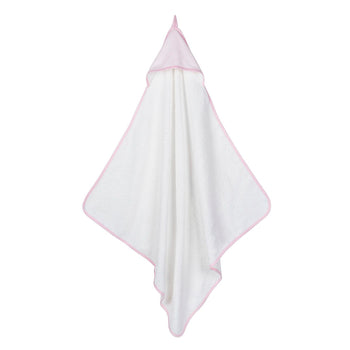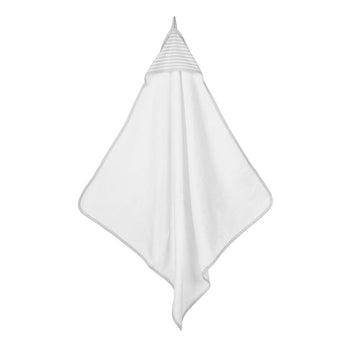Blog
Reading Aloud to Your Little One (Part 2)
In Part 1 of this article, I shared recommendations for reading to your little ones before birth and throughout their first year. This post features research-based advice on reading aloud to toddlers and preschoolers.
Now, first of all, I want to be clear—I know that you are doing your best every day to give your children a wonderful life and as many opportunities as possible. I never mean to suggest that there is only one right way to educate or care for a child or that the same path is right for every child. I know very well that some children are clamoring to read by age three, while others won’t be ready until kindergarten or later. My intention is to share the information that I have learned in my years as a children’s librarian and as a constant reader and researcher. Basically, I want to save you from reading all of the resources that I have (unless you want to—in which case I hope I’m inspiring you to do just that) by bringing their research and information to you in a digestible form.
Reading Aloud to Toddlers
It only gets more fun and rewarding—not to mention harder—to read to your children when they pass the one-year mark. They are starting to walk and talk, and they can respond to the questions you ask while you read by pointing, gesturing, and using some of their newly acquired words. They will even start choosing books and bringing them to you.
Toddlers are learning and comprehending more words every day. But they are also so busy and mobile that reading aloud often feels frustrating for adults. Don’t give up! Keep reading aloud while they crawl, toddle, and play with their toys. Try to make your reading engaging by asking questions and using dramatic voices. Toddlers' attention spans are constantly growing, especially when you are reading about something that they are interested in, and they will enjoy choosing books to read, turning the pages, and asking and answering questions. Though they intimidate many adult readers, wordless picture books like Molly Idle's Flora and the Flamingo are often especially engaging for older toddlers and preschoolers because they encourage adult-child interaction and push little ones to focus on illustrated details and to tell a story in their own words.
But also remember that sometimes a toddler just won’t be in the mood to read, and that’s alright. As Susan Marx and Barbara Kasok emphasize in Help Me Get Ready to Read (2010), you should “respond to your little one’s attention span rather than focusing on finishing the book.” If the reading experience isn't going well, put the book down and come back to reading at a quieter time of day like bedtime. Choose a quiet, dimly lit reading spot to avoid overstimulation and try again.
Another challenge: toddlers (and many preschoolers) love to read the same books over and over and over again—and often these aren't books that hold up over time. These repeated readings are enough to make even the saintliest parents and caregivers pull out their hair, so the rest of us are doomed. Here are some words of advice to get you through this challenging time:
Repeated readings are GOOD for your child.
I know, I know, but it’s the truth. Children learn language by hearing it repeated over and over again. And they gain such a sense of joy and mastery from “helping” you to read a book they’ve heard countless times.
So how can you make the experience less painful? I know this is easier said than done, but try not to let those cringe-worthy books enter your home in the first place. As early education expert Lisa Murphy highlights in Lisa Murphy on Play (2016), we must let children choose the books that we read together, but we can set them up for success by providing only high-quality books in the first place. Make sure your home library is filled with well-written, beautifully illustrated books that will be less painful to read twenty-five times in a row than a book featuring your child’s favorite TV character. Encourage the gift givers in your life to follow this same principle. And if you do want to seek out some Disney princess books, try borrowing them from your local public library. That way, when you can’t bear to read them one more time, you can return them.
What to Read: In addition to what you have been reading throughout the first twelve months of your baby's life, you can now incorporate more books with detailed illustrations, books with a simple narrative structure and strong characters, and books about your toddler’s favorite subjects. There are so many choices, but these are a few of my favorites: More, More, More Said the Baby by Vera Williams; Spots, Feathers, and Curly Tails by Nancy Tafuri; Clip-Clop by Nicola Smee; and Is Your Mama a Llama? by Deborah Guarino, illustrated by Steven Kellogg.
Reading Aloud to Preschoolers
By the time your child is around age three, the world of picture books is your oyster. Since preschoolers have greater self-regulation skills and attention spans than younger children, you can choose picture books with longer and more complex stories that you might have avoided during your child's first few years. But, just as with toddlers and babies, you still don't have to finish a book just because you start it. If your child (even with enhanced attention span) isn't responding to a book, put it down. If it's one you love, try reading it again at another time, but if you're not too enthusiastic about it either, don't force it. One of your primary goals in reading aloud to your children is to instill in them a love of reading—something an unpleasant reading experience will not do.
Reading with your preschooler will probably involve a lot of questions. Between ages two and three, according to Dr. Laura Jana, author of The Toddler Brain (2017), children develop a thirst for knowledge. They gain the cause-and-effect skills that lead them to ask questions ("Why?" "How?") about how the world works. Although it is frustrating to have your reading interrupted by a string of questions from your little one, remember that, as Jim Trelease points out in The Read-Aloud Handbook (2013), “questions are a child’s primary learning tool. [You] don’t [want to] destroy natural curiosity by ignoring it.”
The preschool years are also pivotal for the development of emotional literacy skills, and reading picture books contributes to this process. Picture books encourage young readers to identify and talk about their own and others' emotions, practice active listening skills, and understand others' perspectives. Reading stories about friendship, empathy, and feelings—like Philip C. Stead and Erin E. Stead's A Sick Day for Amos McGee and Judith Viorst's Alexander and the Terrible, Horrible, No Good, Very Bad Day—is a great way to help children develop emotional literacy.
Eventually, some preschoolers may be interested in reading chapter books or show you that they have the attention span for longer stories. This is a great opportunity—reading stories with no pictures helps children practice imagining those pictures in their heads, and build even greater attention spans—but also another challenge since many early chapter books are still too mature or complex for preschoolers. (I'll offer some suggestions for first chapter books in a later post.)
What to Read: Choose picture books with longer, more complex (and mature) plots, but don't hesitate to reread favorites from your children's younger years if they choose them. A few of my favorite picture books for preschoolers are Angelina Ballerina by Katharine Holabird, illustrated by Helen Craig; Robert McCloskey's Make Way for Ducklings; and A Visitor for Bear by Bonny Becker, illustrated by Kady MacDonald Denton.
When Should I Stop Reading Aloud?
Ideally, never. As Jim Trelease notes in The Read-Aloud Handbook, until eighth grade, children listen on a higher level than they read, so you do your children a disservice if you stop reading aloud to them once they start reading independently. Realistically, I know it is difficult (and, for some children, nearly impossible) to wrangle the average fifth grader for some quality read-aloud time. But remember that if you have been reading aloud together since your children were babies, and if it is clear to them that reading is still an important part of your life, the comfort of this longstanding habit may just be something they are still craving. I wasn’t exactly a cool kid, but I loved having my mom read to me well into middle school. I used the excuse of sitting in on her reading to my little brother, but it brought me a real degree of security and peace to listen to her read aloud. Again, I am not suggesting that every child is willing to be read to for that long—that little brother I mentioned didn’t last nearly as long as I did—but let your children’s interest and willingness rather than their reading ability or age be the deciding factor.
Resources
Caroline Blakemore and Barbara Weston Ramirez, Baby Read-Aloud Basics (2006)
Laura Jana, The Toddler Brain (2017)
Susan Marx and Barbara Kosok, Help Me Get Ready to Read (2010)
John Medina, Brain Rules for Baby (2014)
Lisa Murphy, Lisa Murphy on Play (2016)
Jim Trelease, The Read-Aloud Handbook (2013)



